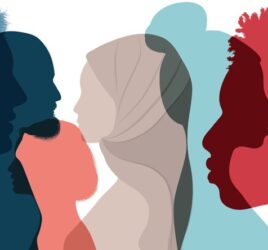
3. Who Attends International Churches? (MICN Missiology Series by Andrew Lupton)
Take a look at the people who frequent your pews every Sunday. Who do you see? It’s important that we are able to communicate who we are reaching as we cast a vision for healthy partnership amongst sending organizations. After you read this article, would you please give your perspective and percentages on this two-minute survey?
Our church reflects trends among other international churches in which a majority of the congregation is made up of foreign passport holders or nationals who have spent formative years outside their passport country. I hesitate to group our congregants, but within our church are four communities that characterize those who attend our international church. The size of these groups have varied throughout my nearly nine years at the United Church of Bogotá (UCB). At the moment, each of these groups makes up about a quarter of our congregation. In no particular order, the four groups consist of:
- Traditional Expats
Those who hold passports from another country and all or a portion of their salary is paid from abroad. Typically, this group includes missionaries, diplomats, foreign military personnel, those working for multinational corporations, international schools, and some NGOs. While it varies slightly, their standard of living is normally that of a Colombian belonging to the upper middle class or higher. - The Young and the Restless
Those who hold passports from another country and all of their salary and/or expenses is paid locally. Humanitarian volunteers, adventurers, Rhodes or Fulbright scholars, or exchange students tend to identify with this group. Typically, this group is young and especially mobile due to the nature of their contract or service/study term. It includes young professionals, foreign language teachers (especially English), entrepreneurs, students of all levels, and romantic partners of Colombians. - Hidden Immigrants
Colombians who have spent a formative amount of time living cross-culturally. While these congregants may also hold passports from other countries, many of them were born in Colombia but shaped elsewhere. In Colombia it is common to hear of adults whose families left when they were children because of the violence and have returned now that the country is more stable. Some have returned to reconnect, some to care for aging family members. Others have been deported from the country in which they were raised. David Pollock and Ruth Van Reken coined the term “Hidden Immigrant” to describe this group. They look like they belong, but culturally they are wired very differently than a Colombian.1 One Korean Third Culture Kid (TCK) reflects, “I think I am more comfortable as a foreigner in a foreign country than being a disguised stranger in my own country.”2 This is the reasoning these adults or their children thrive in an international church setting. Further diversifying this group are children or adults who were educated in a foreign school system (American or British schools) or who have grown up within multicultural families in which one or both parents were raised abroad and some amount of English was spoken at home. Regardless, English has become their heart language and another culture their heart culture. Living standards and occupations vary widely within this group. - Traditional Nationals
Colombians who have never lived abroad, but who are interested in learning English, traveling abroad, our particular “style” of church, or the social connections that come through belonging to an international community. While not specifically within our target group, we gladly welcome members of this group and minister to them as God allows. The standard of living among this group is remarkably wide. Some are only one missed paycheck away from homelessness while others are scholars, celebrities, business leaders, or policy makers.
As overwhelming as pastoring and unifying this sort of diversity can be, I can think of no other social setting in which every stripe and strata regularly and beautifully come together. The nearest comparison I can think of is a World Cup match, but even then nationalities are often divided by allegiance to their home team. Two common features unite this diverse swath of people in our church and in many other international churches, namely, the gospel and mobility.
First, the nations are drawn to a community of people who are liberated and motived by Jesus and his grace. Among the evangelical church options in Bogotá, our church tends to stand out because of our grace-based DNA. We regularly hear Christians from all national and denominational backgrounds breathe an authentic sigh of relief among our community. They wonder, “what is this, that stands out about the ethos of our church?” The answer is embodiment of Jesus’ gospel of grace, namely, that, “we are more sinful and flawed in ourselves than we ever dared believe, yet at the very same time we are more loved and accepted in Jesus Christ than we ever dared hope.” 3
Second, the nations unite around the sociocultural reality of global mobility. Often times the only thing predictable about international church is mobility. People will come and people will go. The nations will gather and the nations will disperse. Groups 1-3 above have had their lives redefined by global mobility. They no longer feel at home anywhere except among the globally mobile, hence the feeling of perpetually belonging everywhere and nowhere. Group 4 often wants their life, or the lives of their families, to be redefined by global mobility. Groups 3 and 4 are absolutely vital to the flourishing of groups 1 and 2 because they serve as cultural interpreters and local bridge-builders. As these groups interact, they exchange locality for global-ity. What is the breakdown in your church? Please, fill out this survey so we can learn from each other. Be sure to tune in next week as we take a deeper dive into the reality of global mobility today .
Andrew Lupton
1 David Pollock and Ruth Van Reken, Third Culture Kids: Growing Up Among Worlds, from the PolVan Cultural Identity Model.
2 Bowers, Joyce M. (Association of Christian Schools International), Raising Resilient MKs: Resources for Caregivers, Parents, and Teachers, p. 48
3 Keller, Timothy, The Meaning of Marriage: Facing the Complexities of Commitment with the Wisdom of God, p. 44.



